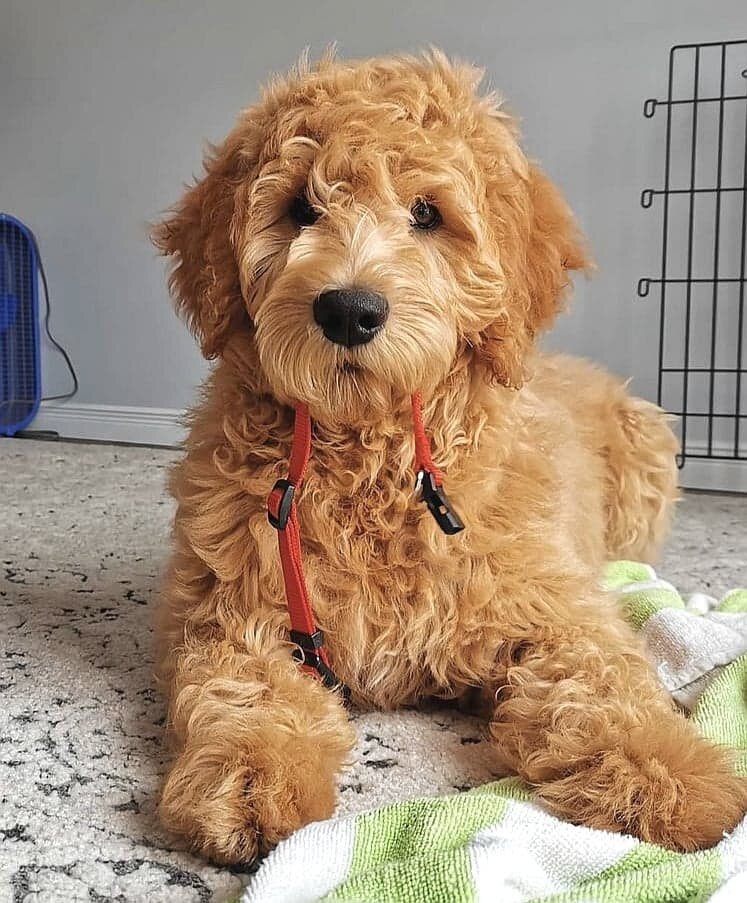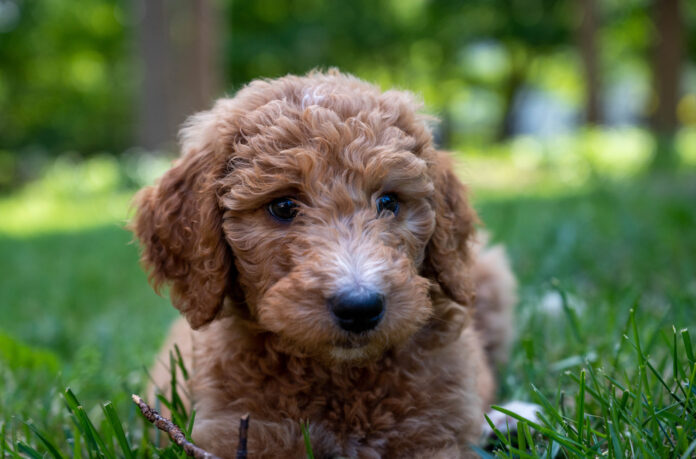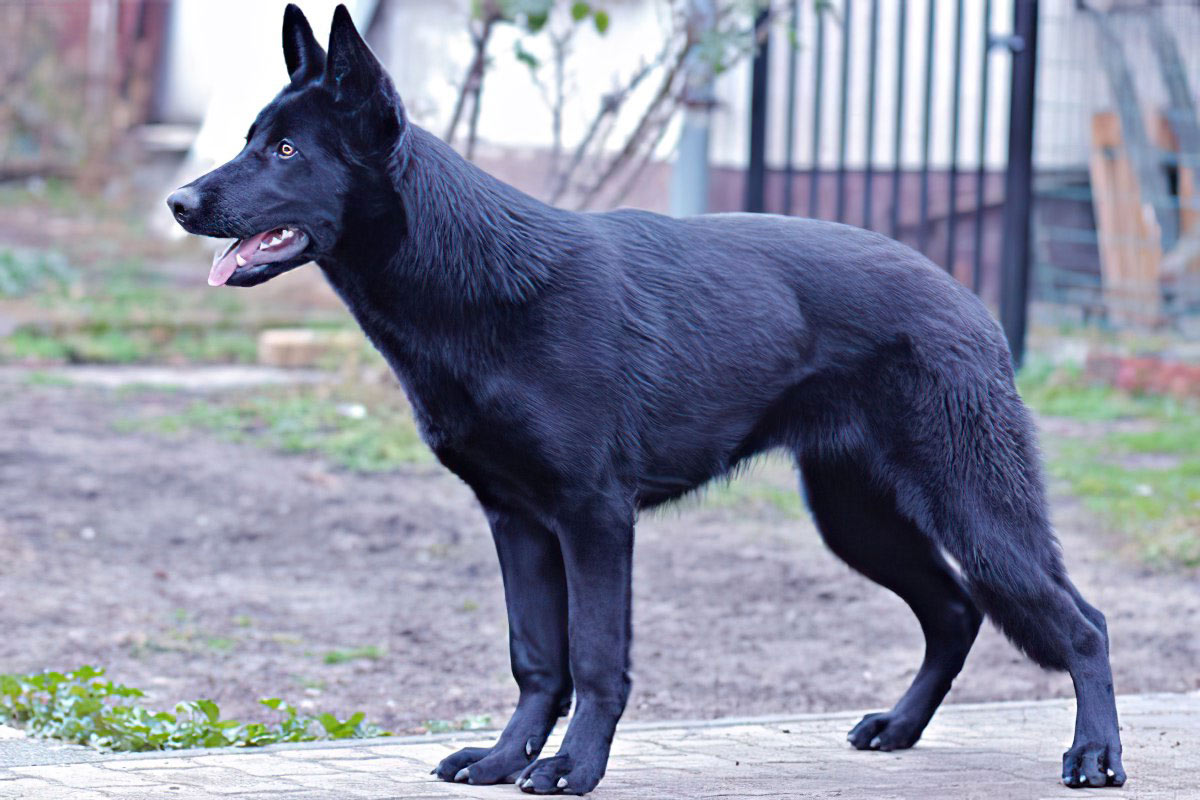Last Updated on September 11, 2021 by Fumipets
The Goldendoodle was developed by combining a Golden Retriever with a Poodle in the hopes of creating a crossbreed with a Golden Retriever’s sweet disposition and a Poodle’s high intellect and minimal shedding. It really worked!
As more people get acquainted with Goldendoodles and their wonderful personalities, this relatively new designer dog is gradually gaining popularity.
They are not only intelligent, sociable, loyal, and loving, but they are also tolerable for allergy sufferers.
What is a multi-generational Goldendoodle? The result of breeding two Goldendoodles beyond the second generation is a multi-generational (multigen) Goldendoodle (F2). The dog’s parents and grandparents are both Goldendoodles, rather than purebred Poodles or Golden Retrievers. F3 generations and beyond are considered multigen by most breeders. To enhance the probability of desirable characteristics like minimal shedding, coat type, and allergy levels, several breeding combinations may be utilised.
To create excellent multi-generational Goldendoodles, a number of variables come together.
The genetics underlying the generations may be complex, so let’s keep things easy as we examine the many generations, particularly the multi-generational Goldendoodle, to discover which one is right for you!

Understanding Goldendoodle Generations
It’s true that the genetics of crossbred dogs like the Goldendoodle may be difficult to grasp.
Breeders have the flexibility to use terms according to their own definitions since there is no fixed standard in place, as there is with purebred, legally recognised breeds.
However, the terms used to describe the different generations of Goldendoodles are more universal.
Where It All Starts
A Golden Retriever is mated to a Poodle to create Goldendoodles, and the resultant litter of pups is known as the first generation, or F1 for short.
F1 pups typically have a long, wavy coat and resemble a teddy bear. Because the pups may take after any parent breed, shedding habits in F1s are difficult to anticipate.
The pups produced when an F1 generation dog is mated back to a Poodle are known as F1b, with the “b” standing for back-cross.
Poodle genes are added to the mix, resulting in pups that are 25% Golden Retriever and 75% Poodle.
F1b dogs are known for their curlier coats, which shed very little and are typically well tolerated by allergy sufferers.
Some breeders prefer to cross an F1b with a Poodle to produce an F1bb. Due to the addition of more Poodle to the lineage, these dogs shed extremely little.
Second generation – F2 – Goldendoodle pups are produced when two F1 Goldendoodles are mated.
Puppies from this generation are comparable to F1 dogs in that they are half Golden Retriever and half Poodle, and shedding characteristics vary from litter to litter.

Here’s Where It Gets Interesting…
F2b Goldendoodles may be made in a variety of methods, with each breeder having its own preferences.
Back-crossing an F2 or F1b to a Poodle is possible, as is breeding an F1 with an F1b.
Due to the greater concentration of Poodle genes in F2b Goldendoodles, they shed very little and are an excellent option for allergy patients.
F3 Goldendoodles are the third generation of Goldendoodles. This generation, like F2b, may be created via a variety of methods.
Breeding an F1B to an F1B, an F1B to an F2B, an F2 to an F2, two F2Bs, or two F3s are common ways.
Although some breeders refer to any generation beyond F1 as multi-generational, the term multi-generational (or multigen) is usually used when referring to F3 generation pups and beyond.
Because Multigens have a lot of genetic variation, their features may vary a lot. As a result, be careful to ask breeders about what they believe to be multigen.
Do They All Need Grooming?
Regardless matter whatever age you pick, you’ll need a few grooming essentials to maintain your dog’s coat healthy and looking its best.
We suggest the following for all Doodle dogs:
Slicker brush — For daily coat care, this brush is important because it eliminates stray hair and dander, distributes natural oils, and works through knots. The best part is that it just pushes a button to liberate imprisoned hair.
Stainless steel de-matting comb — Another must-have item for Doodles. It glides through mats with ease, without ripping out large pieces of surrounding hair or inflicting undue harm to the coat.
Stainless steel comb — This comb is a must-have for any Poodle mix dog that wants to avoid matting. One side contains thin tines that are tightly spaced for precision work, while the other half has tines that are spread further apart for general combing. A comb that is both flexible and gentle!

What Are the Benefits of Multi-Generational Goldendoodles?
Many multi-generational Goldendoodles have a greater percentage of Golden Retriever in their lineage and, as a result, may be more temperamentally similar to a Retriever than a Poodle.
This is a benefit for individuals who care more about their personality than their physical looks.
Poodles, on the other hand, are known for their high-strung and hyperactive personalities, while Golden Retrievers are known for their laid-back but eager-to-please personalities.
As a result, individuals looking for a laid-back Goldendoodle generation often choose a multigen.
Breeders often remark that their multi-generational Goldendoodles shed little and are allergy-friendly.
If DNA testing is done before mating to establish how the parent dogs’ genes for shedding and coat would mix within a litter, this may be the case.
One disadvantage of multi-generational Goldendoodles is that the farther a generation is removed from the original purebred breeds, the less “hybrid vigour” benefit is apparent.
The term “hybrid vigour” refers to the general health of crossbred canines.
Certain types of cancer that are common in Golden Retrievers are not found in multi-generational Goldendoodles, for example.
If you’re wondering what health problems Goldendoodles are prone to, be assured that they’re usually healthy dogs.
Hybrid vigour, on the other hand, does not guarantee that the dog will never have any health issues.
We’ll go through a few of the problems that this breed is prone to in this post.
A word of caution: Before buying a puppy, always ask to check its pedigree.
In order to generate many generations without having to maintain various bloodlines and many dogs on their grounds, some low-quality breeders resort to severe inbreeding.
When looking for a Goldendoodle breeder in your region, our list of well-respected Goldendoodle breeders will come in handy.

Multigen Coat Types
All three coat forms are conceivable in multigens due to the genetics at work, each with its own set of characteristics.
Wavy Coat
The silky, wavy coat may be seen in Goldendoodles of all generations and is very prevalent in multigens.
The wavy coat, often known as a teddy bear coat, has an appealing shaggy look, a hair-like texture, and is typically minimal shedding.
Brushing this coat on a regular basis is essential to maintain it tangle-free.
Curly Coat
Curly coats are also prevalent, and they may have loose curls, tight curls, or curls that are halfway in between.
This coat, which is considered to be the least shedding, may resemble that of a Poodle, but regular brushing is needed since it can quickly form mats.
To make grooming easier, many owners opt to clip the coat.
Straight Coat
The coat is sleek and straight, similar to that of a Golden Retriever, although it is very fluffy. This is the simplest coat to maintain since it just needs light brushing.
Straight-coated Goldendoodles shed more than wavy or curly-coated Goldendoodles, making them less allergy-friendly.
Beware Of This Coat Type
The inappropriate, or flat coat is another coat option with multigens, but it is no longer very prevalent due to DNA testing.
This coat type closely resembles that of a Golden Retriever, however, it lacks the lengthy facial hair on the moustache, eyebrows, and beard.
Testing for the IC gene in breeder dogs may help to prevent this unattractive coat.

What Goldendoodle Generation Is The Best?
The answer to this question is contingent on your search criteria.
Are allergies and shedding a problem for you? Take a look at an F1b or F2b.
If you’re looking for the healthiest cross with the greatest hybrid vigour, go no further. An F1 is what you’ll want to look at.
If you’re looking for a low-maintenance coat, look no further. Your best bet is an F2 or F2b.
If you’re looking for a Goldendoodle with a Retriever-like disposition, look no further. Consider a multigene situation (F3 and beyond).
Do you want to see more of the feistiness seen in Poodles? It’s most likely that an F1b or F2b will suffice.
As you can undoubtedly see by now, there is something for everyone when it comes to Goldendoodles!
The guidelines we’ve provided are an excellent starting point. You should double-check with the breeder since there may be some difference from one breeder to the next.
So, Are Multigens Truly Better?
Owners of multigen definitely believe so.
Goldendoodles with a greater percentage of Golden Retriever DNA typically have excellent temperaments.
The characteristics that have made the Golden Retriever so popular are evident in these multigens.
True, multi-generational Goldendoodles are great dogs with wonderful personalities, but unless you have very serious allergies, you can’t go wrong with any generation.
All Goldendoodles are loving, affectionate, clever, and lively, making them the ideal addition to any household.

Related Questions:
Do Goldendoodles Need To Be Groomed?
Yes. Brush Goldendoodles on a regular basis to prevent tangles and mats from developing in the coat and to remove stray hairs.
Pay special attention to high-friction regions, such as the area under the collar. Cleaning your ears, trimming your toenails, getting a haircut, and taking a bath every now and again is also essential.
Check out our grooming supplies page for information on what items we use with our dogs and what we’ve learned over the years.
What Is The Price Of A Multigen Goldendoodle?
Prices vary widely based on factors like location, demand, quality, coat type, and DNA testing.
A multigen Goldendoodle will cost you between $2,000 and $3,000 on average. (Learn how their pricing is affected here.)
If you want, you may adopt one who is looking for a permanent home for between $200 and $400.


















